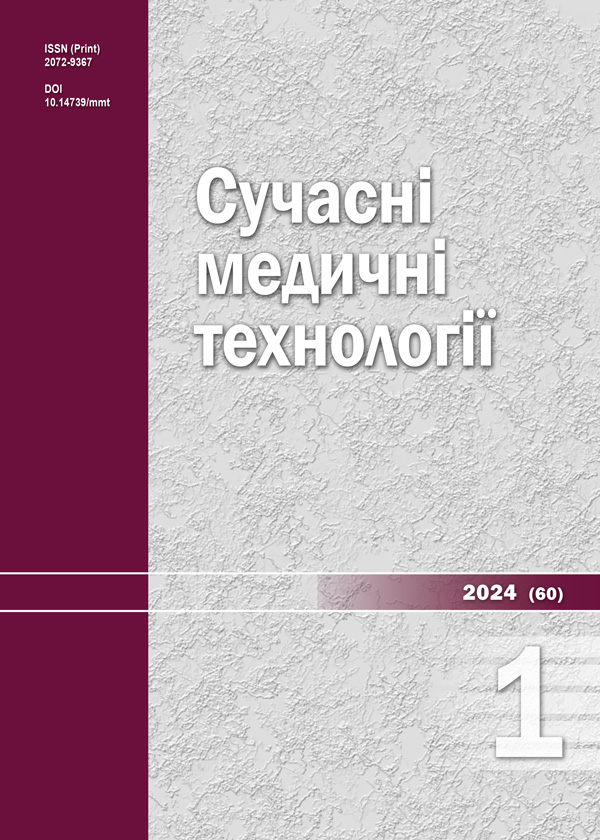Diagnosis of acute diverticulitis colon and its purulent – destructive complications
DOI:
https://doi.org/10.14739/mmt.2024.1.298491Keywords:
colon, diverticulitis, complications, diagnosis of complicationsAbstract
Aim. To determine the diagnostic effectiveness of clinical, laboratory and instrumental methods for detecting acute diverticulitis and its perforation complications.
Materials and methods. Retrospective analysis of clinical, laboratory and instrumental diagnostics of 655 patients with a diagnosis of “acute diverticulitis”, and evaluation of its diagnostic accuracy.
Results. Clinical and laboratory diagnosis of acute diverticulitis and its perforated forms allows to suspect this disease as the most likely among other acute inflammatory diseases of the abdomen; at the same time, the sensitivity of these methods for detecting complicated forms does not exceed 51.2 %. Abdominal ultrasound diagnostic has a high sensitivity of 95.3 % and specificity of 99.6 % in the diagnosis of acute diverticulitis and its complications: sensitivity of 88.7 %, specificity of 99.7 %, and could be a leading method verification of this disease. Abdominal CT, which has similar accuracy, could be used as a second-line method in cases of unclear ultrasound data and absence of a free peritonitis clinic.
Conclusions. The sensitivity of clinical methods for detecting complicated forms of acute diverticulitis of the colon does not exceed 51.2 %. The sensitivity of ultrasound diagnosis of acute diverticulitis is 95.3 %, the specificity is 99.6 %, and its complicated forms are 88.7 % and 99.7 %, respectively, which makes this method essential in diagnosis and differential diagnosis. CT according to various indicators should be used as a method of the second line of diagnosis. Ultrasound and CT diagnostics allow monitoring the course of the pathological process and the effectiveness of treatment of acute diverticulitis complicated forms.
Downloads
Published
How to Cite
Issue
Section
License
The work is provided under the terms of the Public Offer and of Creative Commons Attribution-NonCommercial 4.0 International (CC BY-NC 4.0). This license allows an unlimited number of persons to reproduce and share the Licensed Material in all media and formats. Any use of the Licensed Material shall contain an identification of its Creator(s) and must be for non-commercial purposes only.














